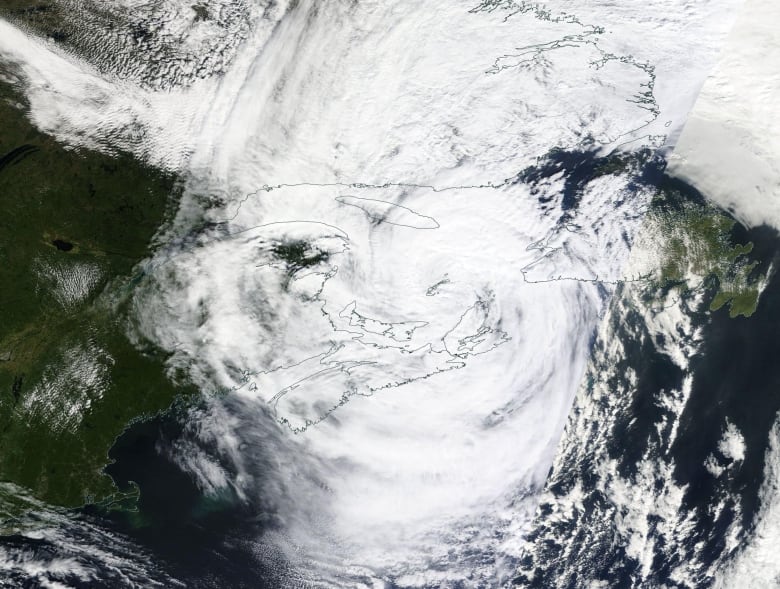

Climate scientists, meteorologists and oceanographers from across Canada are in St. John’s this week, nine months after the nation’s most powerful storm made landfall in Newfoundland.
Monday’s keynote at the Sheraton Hotel, part of the annual Canadian Meteorological and Oceanographic Society congress, took a close look at post-tropical storm Fiona, examining how the Canadian Hurricane Centre forecasted and tracked the storm as it approached the Atlantic provinces.
One of the most crucial aspects wasn’t just accurately predicting the wind speeds, rain amounts and wave heights, said Chris Fogarty, lead meteorologist at the centre.
It was getting that message across to the public.
“We needed to make sure that people were aware that this storm was exceptional,” Fogarty said.
“We knew it would be really bad. So we needed to use some wording that was going to get people’s attention…. We didn’t want people thinking that this is, you know, another [once every] five year-type storm. This is something that’s bigger.”

The hurricane centre’s bulletins reflected that push in the days leading up to landfall: forecasters used phrases like “large and potent,” “dangerous,” and “strongly encouraged to take this storm seriously.”
The strength of that language was “not something we typically use,” Fogarty said. “We reserve that sort of wording for extreme high-end events like this.”
Jim Abraham, president of the Canadian Meteorological and Oceanographic Society, says most people won’t understand the potential impacts of severe weather through data alone, such as projected wind speed.
To better prepare the public, meteorologists are increasingly working with government, insurance agencies and utility companies to map out exactly how severe weather events might affect people in different areas.
“We can be in a better position to provide information to the public on what areas might be more likely to lose power, how long that power might be out … how you should be prepared,” Abraham said.
Science shifts focus
Two decades ago, meteorology as a science was still focused on how to make the most accurate weather predictions.
That’s changed, Fogarty said.
“We’re starting to reach near the limits of predictability,” he said. “So now we’re working much more closely with social scientists, psychologists, who can take our knowledge … and the forecast wording, and we work with them to communicate, what’s the best way we can get that forecast across?
“Once people start to understand how the weather will impact them, just on their individual level, they’re going to be paying more attention to it.”
That new strategy, Fogarty says, is especially essential these days, with data showing an uptick in severe storms.
“It’s not our imagination,” he said. “Things are getting worse.”
Read more from CBC Newfoundland and Labrador












